We hope that each of you, our readers, will enjoy and appreciate this article we present about these 5 Fabulous Animals of Cambodia. It was certainly our pleasure to gather the information for you. May it provide you with both education and increased awareness.
Certainly, these few species listed herein represent only a portion of the similar marvels found in this area. It’s our belief, though, that they serve as excellent representations of the wonders that exist. Check out some of our other articles for similar marvels.
Giant Golden Orb Weaver
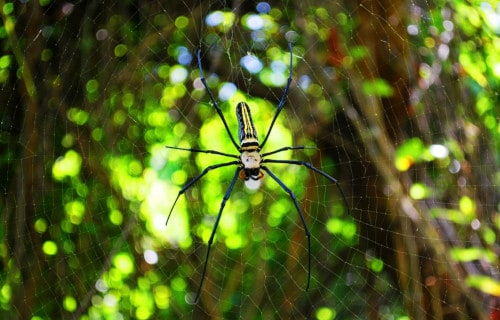
Giant Golden Orb Weaver Facts
- Leading off this article about these 5 Fabulous Animals of Cambodia we give you the only arachnid on the list, the Giant Golden Orb Weaver.
- This amazing product of Nature and evolution most frequently goes by the fully apt and descriptive common name. It also has another, very similar name, though. That’s the term northern golden orb weaver. But, whatever one calls it, it’s impressive.
- The term used also varies across its native range. Among scientific professionals, however, it’s typically referred to by its formal title. Most such specialists know this variety of golden orb weaver spider by the technical moniker of Nephila pilipes.
- Johann Christian Fabricius made the first acknowledgement of the arachnid as a separate and distinct species. This scientifically noteworthy deed the student of Carl Linnaeus accomplished in 1793. Since then, nine subspecies have been recognized.
- For the moment, this wonder of the invertebrate world further appears to be in a much better position than many species around the world. That’s due to the fact that it seems to be maintaining a population base that’s equally sizeable, sufficient, and stable.
- That fortunate situation further seems to hold true across the entirety of its range. Due to this, the IUCN presently lists the Giant Golden Orb Weaver as Least Concern. That status is reflected on the organization’s published Red List of Threatened Species.
- The intriguing arachnid nevertheless faces some factors that could eventually pose a threat to it. Habitat loss and degradation, largely due to human activities, rank among these. Its greatest potential threat, however, likely comes from climate change.
Giant Golden Orb Weaver Physical Description
The remarkable Giant Golden Orb Weaver easily impresses and intrigues those who encounter it. Although the Arthropod does so for several reasons, its sheer size clearly ranks high among them. That’s because it’s one of the largest of all of its close relatives.
In keeping with that, it also manifests a strong degree of the physiological trait of sexual dimorphism, like many arachnids. In its case, this characteristic primarily manifests itself in terms of sheer size. More precisely, the female of the species literally dwarfs the male!
Females of the species typically reach a body length equaling roughly 2 in (5 cm). That body also develops as highly elongated. Along its length, the body varies in width from 0.4 – 0.6 in (1.0 – 1.5 cm). Her legspan, however, typically measures a relatively enormous 6 in (15 cm)!
Males, meanwhile, remain quite tiny in comparison. That holds true given the fact that few individuals of that gender attain a body length beyond 0.25 in (0.64 cm). Its legspan also remains equally small in comparison, rarely exceeding 2 in (5 cm) in this specific aspect.
Otherwise, both genders of the Giant Golden Orb Weaver vary little in general outward appearance. The main exception to this is the coloring of the legs. Those of the female present a combination of yellow and black. Those of the male, though, show a light brown.
In terms of other color patterns, individuals vary significantly, with no regard to gender. The shades presented run from violet, to silver-gray, to various shades of brown. Males also develop small hairs on their legs, while most of the adult females lack these entirely.
- Kingdom: Animlia
- Phylum: Arthropoda
- Class: Arachnida
- Order: Araneae
- Family: Araneidae
- Genus: Nephila
- Species: N. pilipes
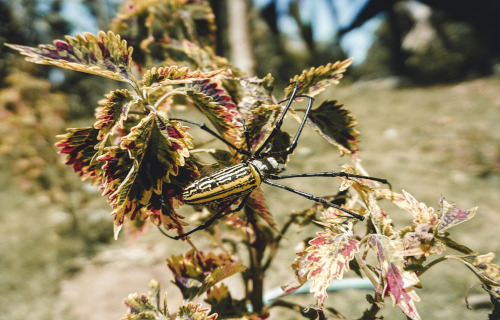
Giant Golden Orb Weaver Distribution, Habitat, and Ecology
Luckily for the Arthropod, the Giant Golden Orb Weaver evolved as native a comparatively broad swathe of the globe. That zone of habitation also happens to be a general region shared by numerous other amazing species. It’s unknown if it ever appeared anywhere else.
That statement holds true partly because it evolved in a region that includes parts of the continent of Asia. There, it makes its home in the east and southeast portions of the area. Yet it also lives in other parts of the general region known as Oceania, including in Australia.
Wherever it makes its home, though, the remarkable arachnid displays strong preferences regarding its exact habitat. As a general principle, it only resides in areas or relatively high moisture, for one. Yet it also strongly prefers that area to also have little or no direct sunlight.
In parts of its range, this frequently includes regions of rainforest. Most often, in all parts of its habitation range, it most commonly lives comparatively near the coast. That’s due to the greater level of overall precipitation. It also appears in parks and even private yards.
The magnificent Giant Golden Orb Weaver generally constructs its large webs in trees or larger bushes. It also creates these structures against buildings or other large features of the terrain. In most of these locations, though, it requires relatively close surface water.
It also evolved as highly choosy in its diet, unlike most spiders. In fact, it only feeds on a few species. It even goes so far as to remove some insects from its web! The spider avoids insects that exude certain unpleasant compounds. It mainly feeds on somewhat larger prey.
Red-Shanked Douc
Red-Shanked douc Facts
- The second species appearing in this collection of 5 Fabulous Animals of Cambodia, the Red-Shanked douc, is the only mammal making an appearance.
- The descriptive term used herein serves as the accepted common name for a most remarkable species of primate. In scientific circles, however, this fabulous animal remains better known by the hard to pronounce name of Pygathrix nemaeus.
- But, regardless of which name one uses to refer to it, one fact stands out about the creature. That statement has to do with its unique appearance. In point of fact, many consider this marvel of Nature to be among the most colorful of all known primates.
- Due to the comparative remoteness of its native habitat, it has only been studied in modern times. More precisely, before the year 1967 this magnificent creature remained completely unstudied. As a result, even now some details about it remain unknown.
- The limited information that is available about the beautiful Red-shanked douc, however, is concerning. As a result, the IUCN currently lists it as Endangered. This unfortunate status appears on the organization’s Red List of Threatened Species.
- Sadly, the known population of the species only numbers about 1,300 individuals. Its native range makes it further vulnerable to habitat loss. Both these factors render it especially vulnerable to the threat posed by the effects of climate change.
Red-shanked douc Physical Description
The remarkable red-shanked douc shares many attributes with its related species. Among these is the fact that it evolved a relatively long, slender body shape. Plus, like those same relatives, and indeed many species, it also displays a moderate degree of sexual dimorphism.
In its case, this principle manifests itself in terms of sheer physical size. As a result, the males of the fascinating creature attain a greater body length than their female counterparts. However, the degree of average difference in length actually equates to less than 10%.
Males reach an average head and body length of about 24 in (61 cm). The female, meanwhile, averages around 21.5 in (54.5 cm) in length. Among both genders, the tail adds an extra 22 – 30 in (56 – 76 cm). Males further average 24 lb (11 kg), and females 18.6 lb (8.4 kg).
But the coloring itself remains the most distinctive characteristic of the Red-shanked douc. For starters, the back and stomach present a gray color. Yet the lower legs show a deep red, while the feet and hands appear black. But the upper legs and forearms display a white color.
The face has the most striking appearance. Its skin appears yellowish-orange, along with the ears. The eyelids show a light powder-blue shade. Plus, the eyes have an almond shape, and the nose remains quite small. Finally, long white whiskers grow on the chin and cheeks.
- Kingdom: Animalia
- Phylum: Chordata
- Class: Mammalia
- Order: Primates
- Family: Cercopithecidae
- Genus: Pygathrix
- Species: P. nemaeus
Red-shanked douc Distribution, Habitat, and Ecology
Quite unfortunately, the confirmed range of habitation of the marvelous Red-shanked douc remains very limited. That’s because it appears to only live in a very small section of Indochina. More precisely, the animal lives in parts of Vietnam and southern areas of Laos.
But, this may not be its only area of habitation in Asia. That’s due to a currently unresolved situation. To the hopeful surprise of many, sightings of it have been reported in northeastern Cambodia, as well. For the moment, though, these sightings remain unconfirmed.
Within its given range, though, it seems to be relatively adaptable to differing habitats. That holds true since individuals appear in areas of both mountain and lowland areas. Sightings also take place in primary, secondary, and also partially deciduous forests.
But, in all areas it inhabits, certain preferences predominate. The magnificent Red-shanked douc appears almost exclusively in the middle and upper regions of the forest canopy. The beautiful mammal rarely descends to the ground, since it acquires water through its food.
The remarkable species of mammal evolved as a vegetarian, like most related creatures. In its case, that diet mainly consists of various leaves high in fiber. It does nonetheless occasionally consume small quantities of seeds, bamboo shoots, buds, flowers, and fruit.
It also evolved a diurnal pattern of behavior. The primate also spends the vast majority of its life in the canopy. There, and also like others of its kind, it lives as a social animal. Groups typically number 4 -15 individuals. Groupings of as many as 50 have been seen, though.
Saltwater Crocodile
Saltwater Crocodile Facts
- Next up among our choices for inclusion in the gathering of 5 Fabulous Animals of Cambodia comes the first of two reptiles, the Saltwater Crocodile.
- This magnificent work of Nature and evolution most frequently goes by its informative common name for good reasons. That term, however accurate, isn’t the only name applied to it, however. In point of fact, several others are sometimes used.
- The alternate names themselves also often provide clues to its nature. These include such terms as the Indo-Pacific crocodile, esturarine crocodile, sea crocodile, and marine crocodile. The animal’s also sometimes informally referred to as the saltie.
- Professional researchers, meanwhile, typically refer to the creature by its scientific name. That’s the technical name of Crocodylus porosus. Regardless of which name one chooses to use when referring to it, though, it’s an especially impressive crocodilian.
- The renowned German naturalist Johann Gottlob Theanenus Schneider made the first formal recognition of the reptile. The well known researcher acknowledged this incredible example of evolution as a separate and distinct species in the year 1801.
- The animal appears, for the moment, at least, to be maintiaing a population base that’s both stable and sufficient. That further seems to hold true throughout the entirety of its range. The IUCN therefore, presently lists the reptile as Least Concern on its Red List.
- The amazing Saltwater Crocodile nevertheless faces dangers that could potentially threaten it in the future. Habitat loss poses a potential threat, due to human expansion. The ongoing process of climate change, however, likely condstitutes its greatest threat.
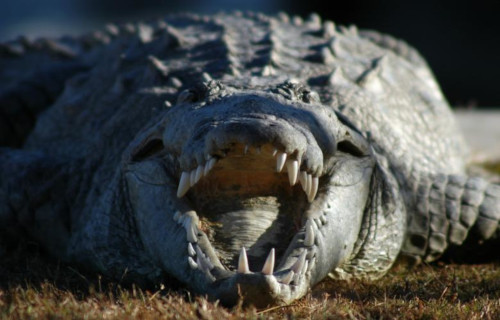
Saltwater Crocodile Physical Description
Sheer size alone isn’t the only trait of the Saltwater Crocodile that impresses those who view the creature. That characteristic nonetheless certainly does bear mentioning. That’s because this species presently constitutes the largest of all currently known crocodilians.
The species also, like many of its relatives, displays a degree of the physiological characteristic of sexual dimorphism. In its specific case, though, this ranks as particularly severe. That’s due to the fact that the males attain a length roughly twice that of females.
The significantly longer males reach an average legnth measuring about 20 ft (6 m). Exceptional specimens, however, sometimes attain lengths of as much as 23 ft (7 m). The males further reach a weight that averages approximately 1,000 lbs (453.6 kg).
Females of the species, meanwhile, only attain an average length measuring approximately 10 ft (3 m). Even the exceptional individuals rarely exceed this by much. Sheer mass, however, remains starkly contrasted, with females rarely exceeding 330 lb (150 kg)!
While rare indivuals exceed these weights in both genders, the two sexes remain otherwise virtually indistinguishable in simple appearance. Its snout also develops wider than most related species. A pair of ridges also extends the length of the snout, from the eyes.
The body of the Saltwater Crocodile further differs from most others in its girth. Its body develops as much stouter in form. In coloring, most adults manifest a dark, greenish-drab shade. A few light gray or tan areas sometimes appear, however, in various spots.
- Kingdom: Animalia
- Phylum: Chordata
- Class: Reptilia
- Order: Crocodilia
- Family: Crocodylidae
- Genus: Crocodylus
- Species: C. porosus
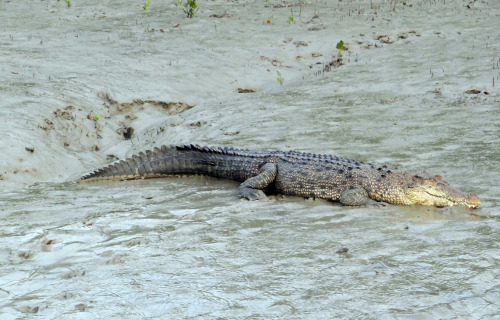
Saltwater Crocodile Distribution, Habitat, and Ecology
Fortunately, the remarkable Saltwater Crocodile evolved as native to a comparatively broad swathe of the globe. Interestingly, furthermore, that range roughly straddles the equator. It further does so, by random chance, almost equally across both hemispheres.
This animal appears as far north as the eastern coast of the country of India. From there, its range extends through Sri Lanka, Bangladesh, Myanmar, Thailand, Malaysia, Cambodia, and Vietnam, to name a few. That range extends as far south as northern Australia.
Wherever it makes an appearance, though, it displays highly specific preferences in terms of habitat. That’s because the remarkable crocodilian makes its home solely along the coastline. Individuals do, however, occasionally swim far out to sea, outside their range.
Most specimens spend the vast majority of their time inhabiting very specific habitat types. These principally consist of river deltas and mangrove swamps. In some regions, the incredible animal also migrate to warmer parts of its range during the local winter season.
The Saltwater Crocodile also differs from most of its kin in yet another manner. Although most crocodilains live as social creatures, this species mainly lives a solitary life. Most individuals, especially the males, further exhibit extremely strong territorial drives.
It also spends much of its time in a lethargic state. This allows it to survive for months at a time without feeding. When it does feed, however, it does so strictly as a carnivore, like other crocodiles. It further represents an apex predator throughout most areas of its range.
Asian Weaver Ant
Asian Weaver Ant Facts
- Appearing next in this compendium of 5 Fabulous Animals of Cambodia is the sole insect member of the group, the aptly-named Asian Weaver Ant.
- This small, but distinctively evolved, invertebrate most frequently goes by the relatively simple common name that we’ve used here. However, like many creatures around the world, it’s also known by other, if less regularly used, alternate monikers.
- In its case, though, it possesses a surprisingly large number of such alternative names. These include similar terms, such as the green ant, the green tree ant, and the weaver ant. Yet, it’s also known by such disparate terms as semut rangrang and orange gaster.
- Meanwhile, professionals, such as researchers, usually refer to it by its official, scientific name. That, however, is a particularly difficult term for laymen to pronounce. That’s because the insect bears the technical name of the Oecophylla smaragdina.
- It further received this tongue-twisting appellation due to the work of Johan Christian Fabricius. The renowned Danish zoologist made the first official recognition of it as a separate and distinct species. This scientifically noteworthy event occurred in 1775.
- Fortunately, the Asian Weaver Ant appears to be maintaining a population base that’s both sizeable and sufficient. This also seems to hold true throughout the entirety of its natural range. The IUCN, therefore, presently has no listing for it on its Red List.
- The intriguing Arthropod nevertheless could be considered to be facing several potential threats to its existence. Habitat loss due to human expansion represents a possible danger. Its greates threat, though, likely comes from ongoing climate change.
Asian Weaver Ant Physical Description
The tantalizing Asian Weaver Ant easily fascinates those fortunate enough to encounter it. While this holds true due to different reasons, sheer size isn’t among them. That’s because, except for the queens, it remains a smewhat small member of its particular Order.
Like most of its kindred, the physiological characteristic of sexual dimorphism applies, but in a manner different than in many creatures. This applies due to the existence of the caste system. The vast majority of the members of a colony are workers, nearly all female.
The few males present within the teeming numbers of their nest exist as drones. Unlike the numerous workers, these few individuals possess wings. Their sole purpose within their caste system, however, is to mate with a queen, when founding a new colony.
The majority of workers attain a body length of between 0.2 – 0.24 in (5 – 6 mm). The major workers, though, reach slightly greater sizes. These grow to as much as 0.3 – 0.4 in (8 – 10 mm) in length. Queens, meanwhile, grow to lengths of up to 0.8 – 1.0 in (2.0 – 2.5 cm).
Gender-based physical differences also appear in other ways, too. The main body of workers possess shorter, thinner legs than the major workers. These also develop significantly larger and more powerful mandibles than those of their much more numerous brethren.
Color patterns also vary between the individuals of the Asian Weaver Ant. That’s true since, except for the queen, each individual presents on overall orange-brown shade. Queens, though, display a markedly different pattern. These manifest a pattern of green and brown.
- Kingdom: Animalia
- Phylum: Arthropoda
- Class: Insecta
- Order: Hymenoptera
- Family: Formicidae
- Genus: Oecophylla
- Species: O. smaragdina
Asian Weaver Ant Distribution, Habitat, and Ecology
Thankfully, the distinctive Asian Weaver Ant evolved as indigenous to a comparatively broad swathe of the globe. The regions it inhabits already remain well known for their impressive array of life. It’s currently unknown, though, if the insect ever appeared anywhere else.
As the name of this marvel of Nature and evolution implies, its zone of habitation includes large portions of the continent of Asia. However, the intrepid invertebrate’s also present in large sections of Australia. This provides it with a powerful evolutionary advantage.
Within that extensive overall range, though, it displays strong preferences regarding its choice of habitat. Known population concentrations only appear in the more tropical portions of its range. Thus, though extensive, its concentration’s somewhat broken.
The Arthropod further distinguishes itself from most of its relatives in another maner. That’s due to the fact that it exists solely as a primarily arboreal species. Wherever present, the species constructs its nests among the canopies and foliage of local tree varieties.
Each colony of the amazing Asian Weaver Ant may consist of multiple nests. The different nests sometimes appear in a single tree, or spread across several. Colonies sometimes reach massive sizes. The larger examples, in fact, occasionally exceed 500,000 individuals!
Members of this unique species principally feed on various local insects, and other small invertebrates. This mainly includes beetles, flies, bees, and even other ants. The species also maintains populations of aphids, to feed off the honeydew these creatures produce.
Reticulated Python
Reticulated Python Facts
- Closing out this article about 5 Fabulous Animals of Cambodia we give you the powerful wonder known as the Reticulated Python.
- The amazing animal clearly represents a particularly large variety of python. In fact, although not the most heavily built, the species currently ranks as the longest snake on earth. That impressive fact alone makes the creature worthy of note.
- Just as with other types of pythons, though, this truly amazing animal feeds as a constrictor, since the enormous snake has no venom. In addition, fully grown adult individuals become more than powerful enough to kill a human being.
- Such attacks on human beings by this particular species remain virtually unknown, however, despite what many people tend to believe. Though this rarely occurs, when it does, it usually happens in specific circumstances.
- These include if the snake has been removed from its natural habitat, or that habitat, frequently located near water, is disturbed. Related to this is the fact that the awesome Reticulated Python also ranks as a rather excellent swimmer.
- This truly remarkable trait ranks as one that the incredible reptile further shares with many of its related species. Among this particular example of constrictor, however, adult specimens even occasionally venture far out at sea.
Reticulated Python Physical Description
Most notably, the Reticulated Python fully earns its designation as the longest snake known to man. To the amazement of some, exceptional adult specimens sometimes approach 23 ft (7 m) in length. These truly gigantic individuals do not occur often, though.
Typical adults actually measure around 20 ft (6.1 m) in total length, and the usual mature individual further weighs about 165 lb (75 kg). The species presents no discernible sexual dimorphism, however, with both genders possessing the same appearance and size.
Its markings remain highly distinctive, and typically consist of intricate geometric patterns. These patterns also combine a quite wide variety of color shades. The exact colors vary according to the geographical range, sometimes making the snake difficult to identify.
This great variation in coloring among the Reticulated Python also represents an evolutionary adaptation to the local environment. Its remarkable natural camouflage also serves to make this highly dangerous animal almost invisible in its respective habitats.
- Kingdom: Animalia
- Phylum: Chordata
- Class: Reptilia
- Order: Squamata
- Family: Pythonidae
- Genus: Python
- Species: P. reticulatus
Reticulated Python Distribution, Habitat, and Ecology
The Reticulated Python appears to be endemic to quite a wide range. This area extends across much of Southeast Asia. In fact, this range extends from India, Bangladesh, and Laos, through Indonesia. It also includes numerous island countries, such as the Philippines.
In addition to its other impressive characteristics, it remains highly adaptable to its surroundings. As a result of this ability, it thrives in a rather wide variety of habitats. However, these regions of habitation typically include woodlands, grasslands, and forests.
But even within that native range, this fascinating reptile remains quite versatile in its habitat requirements. Amazingly, the enormous animal frequently inhabits rivers, lakes, and even large streams within these areas, being an excellent swimmer.
It feeds almost exclusively as an ambush predator, like other known types of constrictors. The diet, however, understandably varies, depending upon its location. This commonly includes such prey as larger mammals, but smaller specimens will feed on birds and rodents.
This species, like other snakes, evolved as oviparous. A female Reticulated Python will lay anywhere from 15-80 eggs per clutch, after mating. These then require an average of about 88 days to hatch. Newly hatched specimens average about 2 ft ( 61 cm) in length.
5 Fabulous Animals of Cambodia

We hope that each of you enjoyed reading, and hopefully learning from, this article we’ve written about these 5 Fabulous Animals of Cambodia. It’s also our hope that doing so has left you with either a new or renewed appreciation for such wonders of Nature.
Unfortunately, however, many of their kindred around the world now find themselves facing strong threats to their continued existence as a species. Many of those dangers, in fact, stem from the actions of mankind. We must do all we can to protect and preserve them all.
Check out our other articles on 4 Remarkable Reptiles of Australia, Africa’s Many Geological Masterpieces, 7 Gorgeous Invertebrates of Georgia, The Mighty Tornado
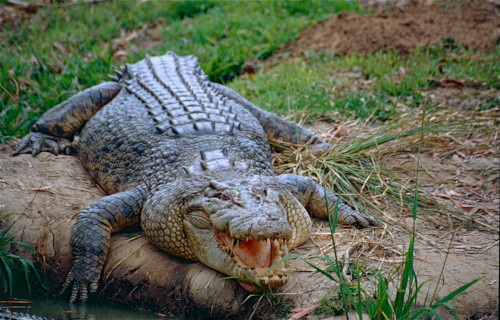
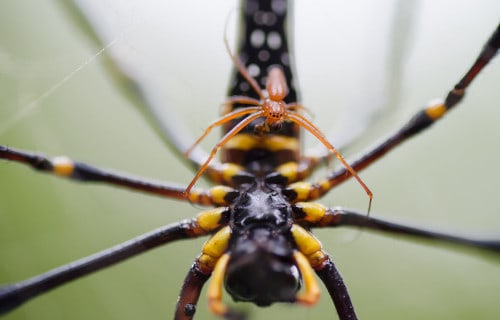
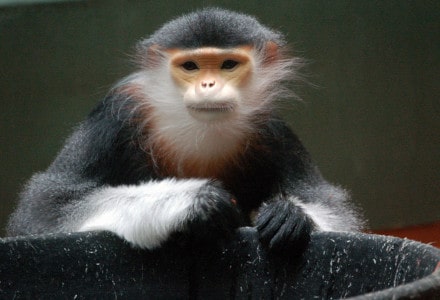
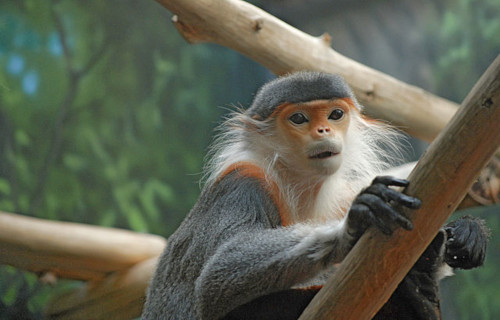
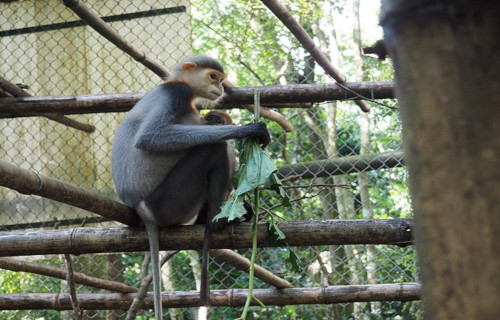
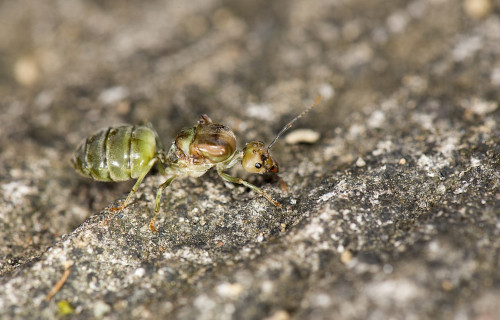
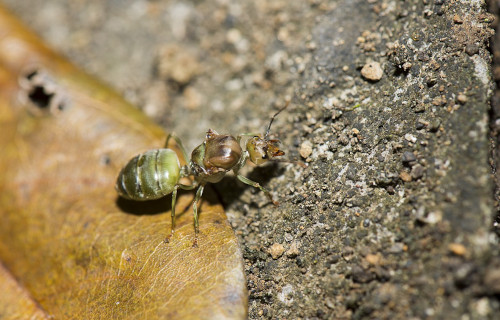
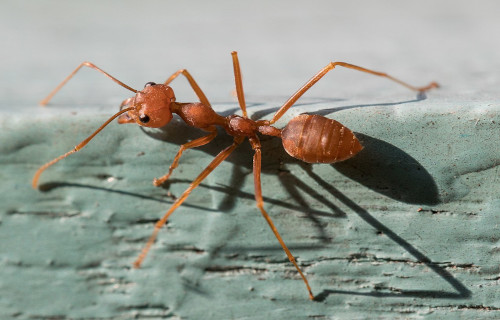
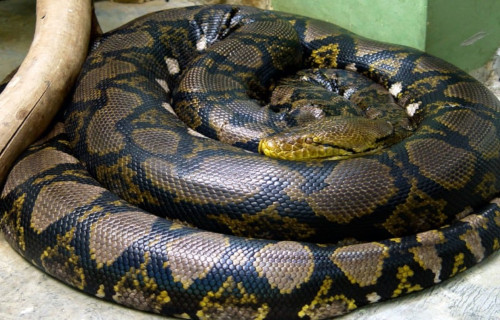
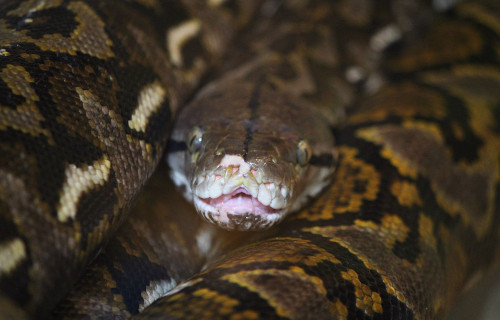
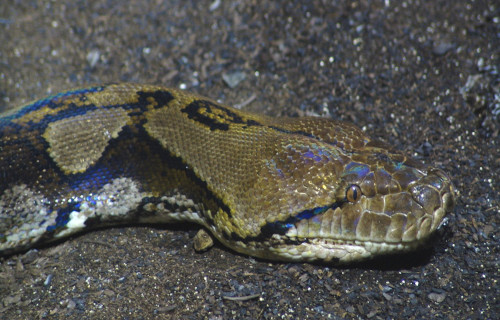









Leave a Reply